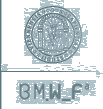Western Balkans and EU - Part 11
[ Western Balkans and EU ]
From a marginal topic, the so-called "Western Balkans" are moving into the centre of attention of EU politics - despite a growing lack of support from the EU population for the integration of this region [1]. In the last few months, the EU Commission published three major documents related to the EU integration of the Western Balkans: progress reports on Croatia, Serbia and Montenegro, Kosovo, the former Yugoslav Republic of Macedonia (FYROM), Albania, Bosnia-Herzegovina (October-November 2005, cf. this blog, 12.11.2005); an enlargement strategy (9.11.2005); and a communication on The Western Balkans on the road to the EU: consolidating stability and raising prosperity (27.1.2006; press release). In mid-February, Commission President José Manuel Barroso undertook his first trip to the Western Balkans together with Enlargement Commissioner Olli Rehn.The Commission communication The Western Balkans on the road to
the EU: consolidating stability and raising prosperity revises the progress achieved since the Thessaloniki
Agenda and proposes the following measures to promote economic development and peacebuilding in the Western
Balkans:
a regional Free Trade Agreement which would replace the existing 31 different bilateral trade agreements
between the countries of the region
easing visa requirements (exploratory talks will be started with FYROM in early 2006); facilitating travel for
researchers and students; facilitating local border traffic along EU borders with the Western Balkans
introducing new scholarship schemes to promote research
promoting civil society dialogue with the EU
the regional School for Higher Education in Public Administration (one of the main points of the Thessaloniki
agenda 2003) should start its first training activities before the end of 2006
The Free Trade Agreement, initially a proposal from the Stability Pact taken up by the EU in 2005, is the most
controversial issue, especially in Croatia, where it is considered as an attempt of "revival" of the old Yugoslavia. The
Croatian government prefers to stick to the Central European Free Trade agreement (CEFTA) between Bulgaria, Romania,
and Croatia, and expand it after Bulgaria and Romania will leave (as soon as they become EU members). 56% of Croats
oppose a Balkan free-trade zone according to a poll published on 31 January 2006 in the newspaper Vecernji list, 45%
see it as an attempt to recreate Yugoslavia, and only 14.4% support the idea. The Serbian government criticises that not
enough attention has been paid to the need for foreign investment (which is, nevertheless, another topic). Other countries
fear that the Free Trade Agreement might be considered by the EU as a replacement for EU membership [2].
In addition to the free-trade area, the Commission has extended until 2010 the Autonomous Trade Measures, ensuring
free access to the EU market for practically all products from the region, and plans to establish a zone of diagonal cumulation of origin between the EU and the Western Balkan countries which have a free trade
agreement with the EU (currently Croatia and FYROM) (= the applicable rules of origin will be harmonized, and thus trade
is made easier). In a second step, the Western Balkans could be included in the Pan-Euro-Mediterranean system of diagonal
cumulation.
All these proposals will be discussed at the "informal" meeting of EU and Western Balkan foreign ministers in Salzburg
on 11-12 March 2006.
[1] Cf. Franz-Lothar Altmann: EU-Erweiterungsmüdigkeit und Westlicher
Balkan, SWP-Aktuell 60, Dec. 2005; and cf. Milica Djilas: EU to Western Balkans:
Communicating the Future, Transitions Online, 24.2.2006.
[2] Cf. Mirna Skrbic:
The Western Balkans: Trade for
a Better Image, Transitions Online, 16.2.2006: an interview with E. Busek; and Aleksandar Mitic: The Western Balkans: Too Much
Yugoslavia or too Little EU?, Transitions Online, 6.2.2006
< previous Posting next >
<< previous Topic next >>
SEE-EU





Antworten